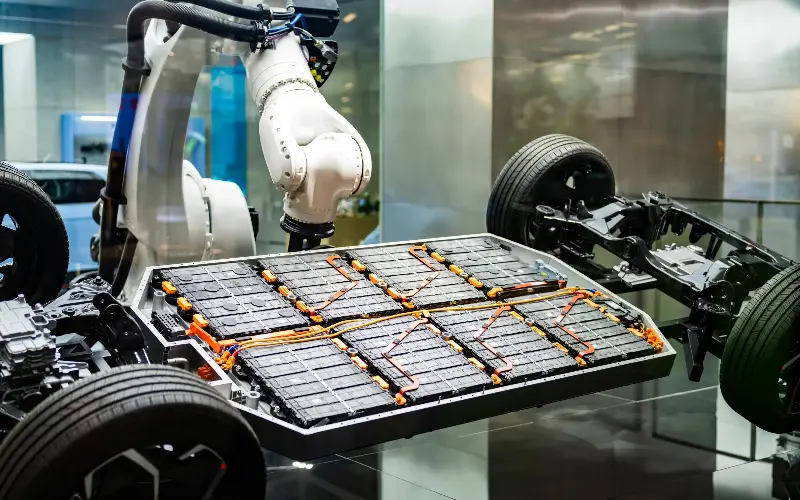
“It says it will do 226 miles and it has 84 per cent charge,” said my friend of the Polestar 2 he was considering buying. “Does that mean the battery is in good shape?”
I told him I had no way of knowing for certain, but I could make an educated guess – that this would equate to a real-world range of around 270 miles, suggesting the battery on this two-year-old car was roughly as healthy as it had been when new. Its state of health looked good.
But that guess depended on countless variables: how heavy-footed the previous driver had been; how often it had been rapid-charged; whether it had been fully or partially charged each time; even the weather on that particular day.
And since battery degradation is the main concern for anyone buying a used electric car, there has to be a better way than guesswork to gauge exactly how well a battery is still performing.
Simple test
Of course, there is a better way. A battery state-of-health (SoH) check is a simple test: plug a scanner into the car’s diagnostic port, interrogate the software, and the battery management system will provide a readout of the percentage of the battery’s original capacity that remains.
State-of-health certification could be a boon for British car dealers, who are currently struggling under the weight of an oversupply of electric cars. For years, government incentives have heavily favoured EVs as company cars, flooding the new car market.
Yet seemingly little thought has been given to what happens when these cars return from their leases and enter the used market.
EVs dumped on dealers
Used car buyers are becoming more open-minded about EVs, but there’s still a way to go – and there aren’t enough ready to take the plunge to fully absorb the huge number of EVs being dumped on dealers.
“There still seems to be division between those who are open to EVs and those who would rather walk,” says Ashley Winston, the director of vehicle sourcing company Palmdale Car Finders. “But this divide is definitely reducing.
“I think people are realising that EVs will be the vast majority of options in the future and are just accepting it. So buyers are indeed becoming more open-minded – but not massively.
“Additionally, it’s difficult to see the effect on the used EV market because there is still a glut of cheap used EVs. I think that the over-supply will last for a long while.”
This over-supply is having an effect on trade-in values of EVs that return to the used market later on. “A lot of dealers still refuse to stock EVs,” Winston explains. “Those that do will only buy them for stock if they are very cheap, which makes sense as EVs depreciate. If we have an EV to trade out, we expect very low offers.”
Buyers’ concerns
So could SoH testing make a difference? Certainly, buyers are worried about the potential for battery degradation in used EVs. A 2023 survey of 2,000 British drivers by the Green Finance Institute found that 62 per cent of those who said they wouldn’t buy a used EV named their main reason as their concern about battery lifespan.
It’s a concern shared by dealers – 45 per cent of whom say that they would avoid bidding at auction on used EVs that don’t come with any information on their battery health, according to recently released research by trade-to-trade auction site Dealer Auction.
Some auction houses have cottoned on to this fact. BCA, for example, now offers battery health scores on its EVs. So why shouldn’t dealers be compelled to pass on this same level of reassurance to buyers?
“I’m not sure how realistic it is that this becomes law,” says Winston. “I think that if that were to happen, non-franchised dealers would struggle purely with the equipment needed to generate an EV battery health report.
“The reality is that this will be a change and the used car industry doesn’t handle change well. That said, an EV battery certification is just an add-on to a pre-approved preparation process anyway. Some might say it’s simpler than needing an oil and filter change.
“That would open up the market for an independent company to offer such a service to dealers. In reality, it’s just a plug-and-play option. I suspect the technology is there to do it remotely, too.”
Why isn’t battery SoH a regulation?
There’s a chance that regulation might not even be necessary. Some dealers are starting to recognise that a SoH certificate is a useful sales tool.
Scan the classified adverts for electric cars and you’ll already find some with mentions of a certified battery health figure.
“Dealers have been slow to adopt it,” says Winston, “but hopefully more franchised dealers will start doing so soon. I don’t know any independent dealers which offer it yet, though.”
And if the dealers don’t get there, the manufacturers may beat them to it. The latest Toyota bZ4X electric car, for example, has an option in the instrument binnacle menu to display the current SoH, enabling potential buyers to check with no more than a few button presses from inside the car. It’s one of the first models to do so – but there’s a strong chance that more will follow.
Preaching to the converted
Winston remains unconvinced that SoH certification will be a silver bullet to get second-hand buyers more interested in EVs. “Range and charging are still the biggest objections,” he says. “Although I don’t think battery certification will move that many more people to buy an EV, I do think that battery certification will be of importance for people who have already decided to buy an EV.”
Either way, if the Government wants to incentivise people to make the switch into EVs, it would do well to remember that it’s no good foisting them on new car buyers without some sort of strategy to deal with those cars when they arrive on the second-hand market at the end of their lease.
SoH certification might not be the be-all-and-end-all, but it would certainly remove the guesswork for buyers of second-hand cars who do decide to go electric – and that might in turn help to incentivise a few more to do so.
